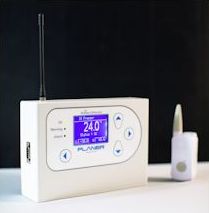 Bill Boone, Ph.D. with the Greenville Health System in Greenville, South Carolina has been publishing on key aspects of ART outcomes for many years. Of special interest to Planer customers will be his papers on air quality, the way that temperature affects equipment in the ART lab and his latest paper on the variability of temperature inside larger incubators
Bill Boone, Ph.D. with the Greenville Health System in Greenville, South Carolina has been publishing on key aspects of ART outcomes for many years. Of special interest to Planer customers will be his papers on air quality, the way that temperature affects equipment in the ART lab and his latest paper on the variability of temperature inside larger incubators
This latest paper, published October 2013 in the Journal of Assisted Reproduction and Genetics, and co authored with Walker, Butler and Higdon, deals with temperature variations within and between large incubators. The trial was performed in an ART lab in a university hospital and temperature values were taken at various locations within and between incubators. These showed that even though the two large incubators were each set to 37.0 °C, same make and model incubators had significantly different internal temperatures. Temperature has been shown to be important in embryo culture: the findings of Abramczuk and Lopata are cited showing the highest human in vitro embryo cleavage progression rate and pregnancy were obtained at 36.9 deg.
 Using wireless temperature sensors, temperatures were recorded every five minutes for four hours at strategic locations in the incubators; thirty measurements were taken for each position. Temperatures differed significantly amongst the upper, middle and lower shelves; also between the front and the backs of the internal shelves.
Using wireless temperature sensors, temperatures were recorded every five minutes for four hours at strategic locations in the incubators; thirty measurements were taken for each position. Temperatures differed significantly amongst the upper, middle and lower shelves; also between the front and the backs of the internal shelves.
The authors suggest that lab personnel should evaluate these larger incubators for temperature variations within and between different models and develop ways to deal with discrepancies. The report is published by Springer and can be purchased at http://link.springer.com/article/10.1007/s10815-013-0104-0
Two other of Bill's many publications are on the way air quality and then temperature affects outcomes in fertility laboratories.
The latter paper evaluated the effect of ambient room temperature on equipment typically used with in vitro fertilisation (IVF) showing a direct relationship between room temperature and equipment temperature stability. When room temperature increased or decreased, equipment temperature reacted quite rapidly in a corresponding manner. Bill et al conclude that room and equipment temperatures should be monitored faithfully and adjusted as frequently as needed. http://www.ncbi.nlm.nih.gov/pubmed/23918464
The former paper, on air quality, investigated the effect of improved air quality in IVF and subsequent embryo development. It showed that the proportion of embryos past the four-cell stage increased steadily in the years after a new Class 100 clean room was built. http://www.ncbi.nlm.nih.gov/pubmed/9935133

